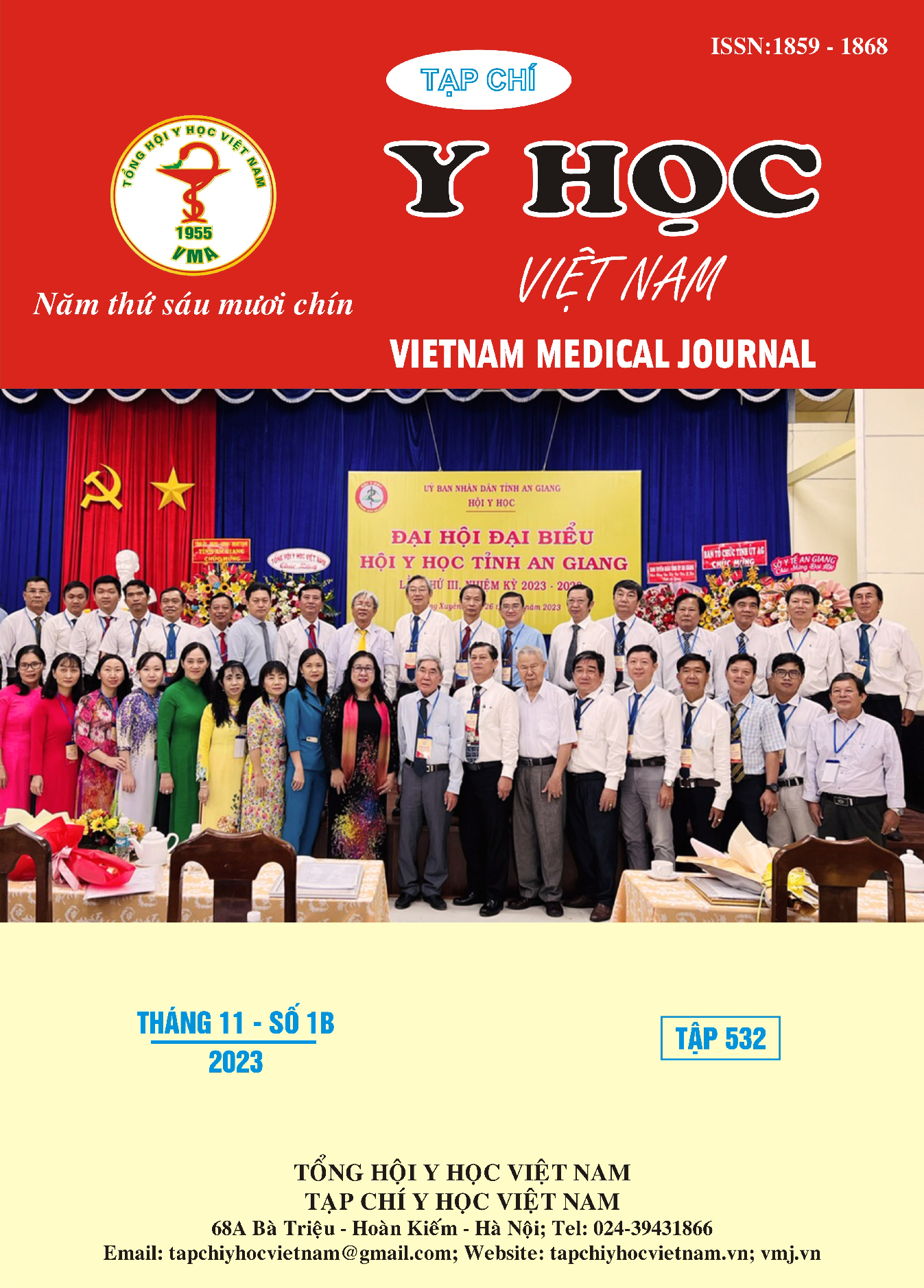SURGICAL TREATMENT RESULTS OF THORACOLUMBAR FRACTURES BY PEDICLE SCREW PLACEMENT THROUGH VERTEBRAL COLUMN AT BAC NINH GENERAL HOSPITAL
Main Article Content
Abstract
Background: Spinal cord injury (CTCS) of the thoracolumbar hinge segment is a particularly common injury that accounts for the majority of all thoracic and lumbar spinal injuries. Research objectives: Evaluate the results of surgical treatment for spinal fracture at the thoracic-lumbar hinge segment by pedicle screw placement at Bac Ninh Provincial General Hospital. Subjects and research methodology: Subjects are 60 patients diagnosed with thoracolumbar hinge fractures who underwent spinal fixation surgery with pedicle screws at Bac Ninh General Hospital from January 2021 to June 2023. Study results: The average age in the study was 48.5±10.6. Men accounted for 73.3%, women accounted for 26.7%. The most common cause of the injury is occupational accidents, accounting for 45%. The most commonly injured vertebral disc was L1, accounting for 67.2%. In Denis classification of vertebral fractures, there were 51 cases of vertebral fractures, accounting for 85%; 8 cases of vertebral subsidence, accounting for 13.3%; 1 case of dislocated vertebral fractures, accounting for 1.7%. The vertebral body kyphosis angle and regional kyphosis angle were significantly improved. Treatment results were good (96.6%), fair (1.7%), average (1.7%). Conclusion: Thoracolumbar spine fixation surgery at Bac Ninh General Hospital has proved to be effective with good results. It firmly secures the spine, relieves spinal cord compression and facilitates neurological recovery as well as early movement, mitigating the chance of complications.
Article Details
Keywords
thoracolumbar spine fractures.
References
2. Đặng Ngọc Huy. Kết quả bước đầu điều trị phẫu thuật gẫy cột sống ngực thắt lưng mất vững tại bệnh viện C Thái Nguyên. Tạp chí khoa học và công nghệ. 2010:89(01), 125-130.
3. Tài NH. Đánh giá kết quả điều trị phẫu thuật gãy cột sống ngực thắt lưng bằng nẹp vít qua cuống cung. Tạp chí Y Dược học Cần Thơ. 2018;16.
4. Trần Văn Thiết LMB. Đánh giá kết quả điều trị phẫu thuật 324 bệnh nhân chấn thương cột sống vùng ngực- thắt lưng tại bệnh viện đa khoa Thanh Hóa. Tạp chí Y học TPHồ Chí Minh. 2014: 6, 37-40.
5. Nguyễn Thanh Vân. Kết quả phẫu thuật cố định cột sống do chấn thương và bệnh lý bằng nẹp vít qua cuống tại bệnh viện đa khoa Hợp Lực Thanh Hóa. Tạp chí Y học TPHồ Chí Minh. 2011:16(14), 366-350.
6. Arnold HAvPM. Thoracolumbar Anterolateral and Posterior Stabilization. Paul M Arnold (2013), "Thoracolumbar Anterolateral and Posterior Stabilization", Schmidek & Sweet Operative Neurosurgical Techniques: indications, methods, and results, Sixth Edition. 2013;1:tr. 2027-2034.
7. Tsou PM, Wang J, Khoo L, Shamie AN, Holly L. A thoracic and lumbar spine injury severity classification based on neurologic function grade, spinal canal deformity, and spinal biomechanical stability. The spine journal: official journal of the North American Spine Society. 2006;6(6):636-647.
8. Waddell WH, Gupta R, Stephens BF, 2nd. Thoracolumbar Spine Trauma. The Orthopedic clinics of North America. 2021;52(4):481-489.


